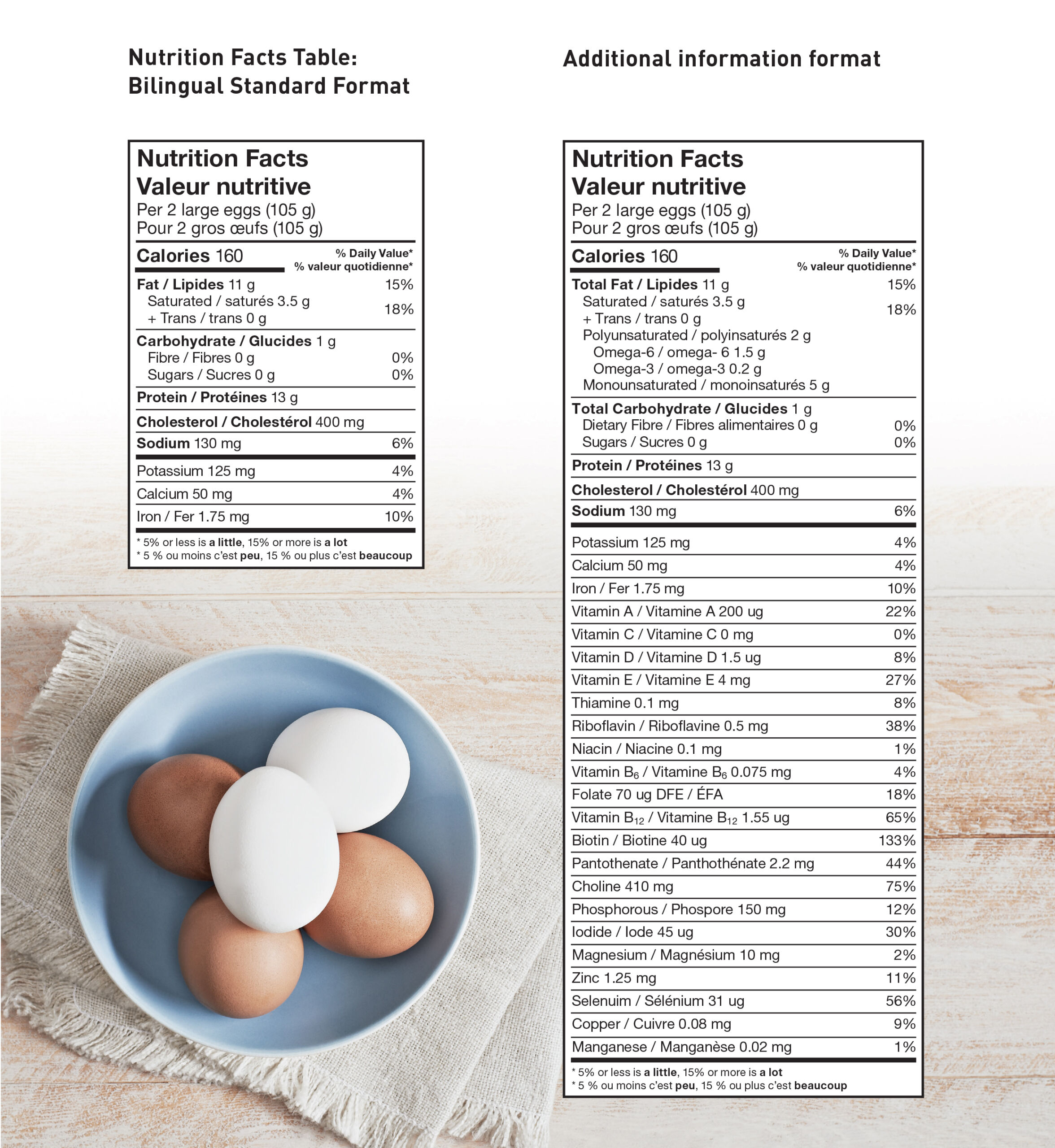
New Nutrition Facts Tables, same nutritious eggs
By Egg Farmers of CanadaYour egg cartons have a familiar shape and feel you’ve come to recognize for a lifetime. The Nutrition Facts Table on that carton is about to change. Here’s what you’ll soon be reading every time you pick up eggs at your grocery store.
First, some context: at the end of 2015, Health Canada announced changes to the nutrition labelling regulations. Among a variety of changes to the regulations, Health Canada updated the nutrition tables you find on food products sold in Canada. The updated tables represent the latest nutritional science—and that means they are going to look a little different than the tables you are used to.

The order in which certain nutrients are displayed is going to shift. Some of the mandatory nutrients declared in the shorter version of the Nutrition Facts Table are different than in the tables you are used to seeing. For example, vitamin A and C will be removed because according to Health Canada most Canadians get enough of these nutrients in their diets.
Another change being implemented as part of the new regulations are more accurate serving sizes. In the case of eggs, the serving size has changed from one to two eggs, doubling the nutrients declared on the Nutrition Facts Table. That portion size is a better reflection of how people actually eat eggs, since Canadians will have two eggs more often than they will just have one (I guess they are too yummy to avoid seconds!).
Keep in mind you won’t see these changes immediately. There’s a five-year transition in bringing these new labels to store shelves. With a deadline of 2022, you’ll start to see new Nutrition Facts Tables slowly over time.
Yes, the Nutrition Facts Table may be changing, but one thing will never change: the simple, nutritious goodness of the humble egg.